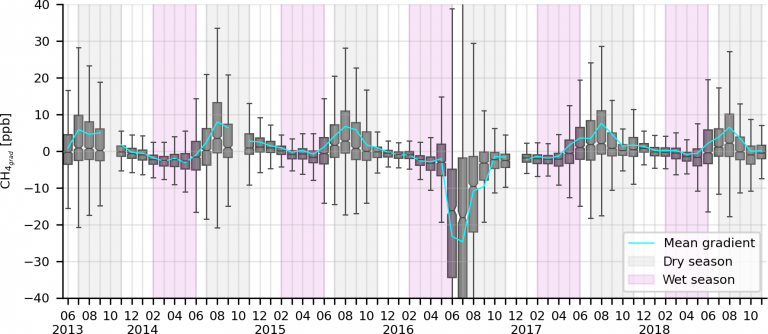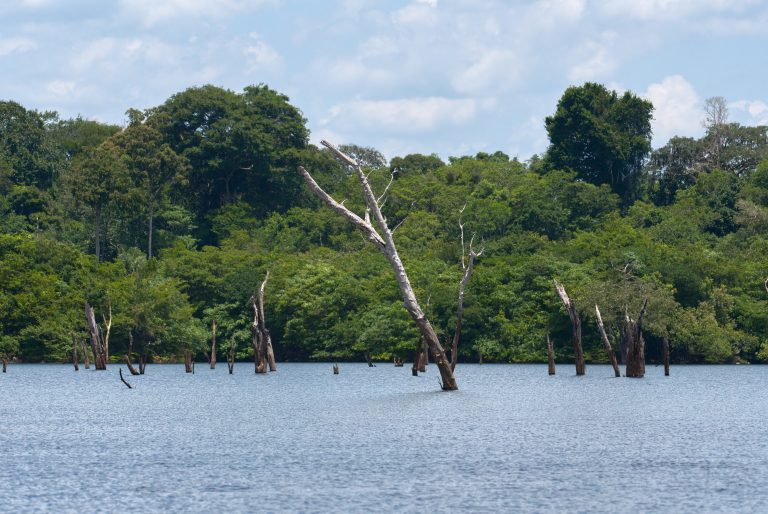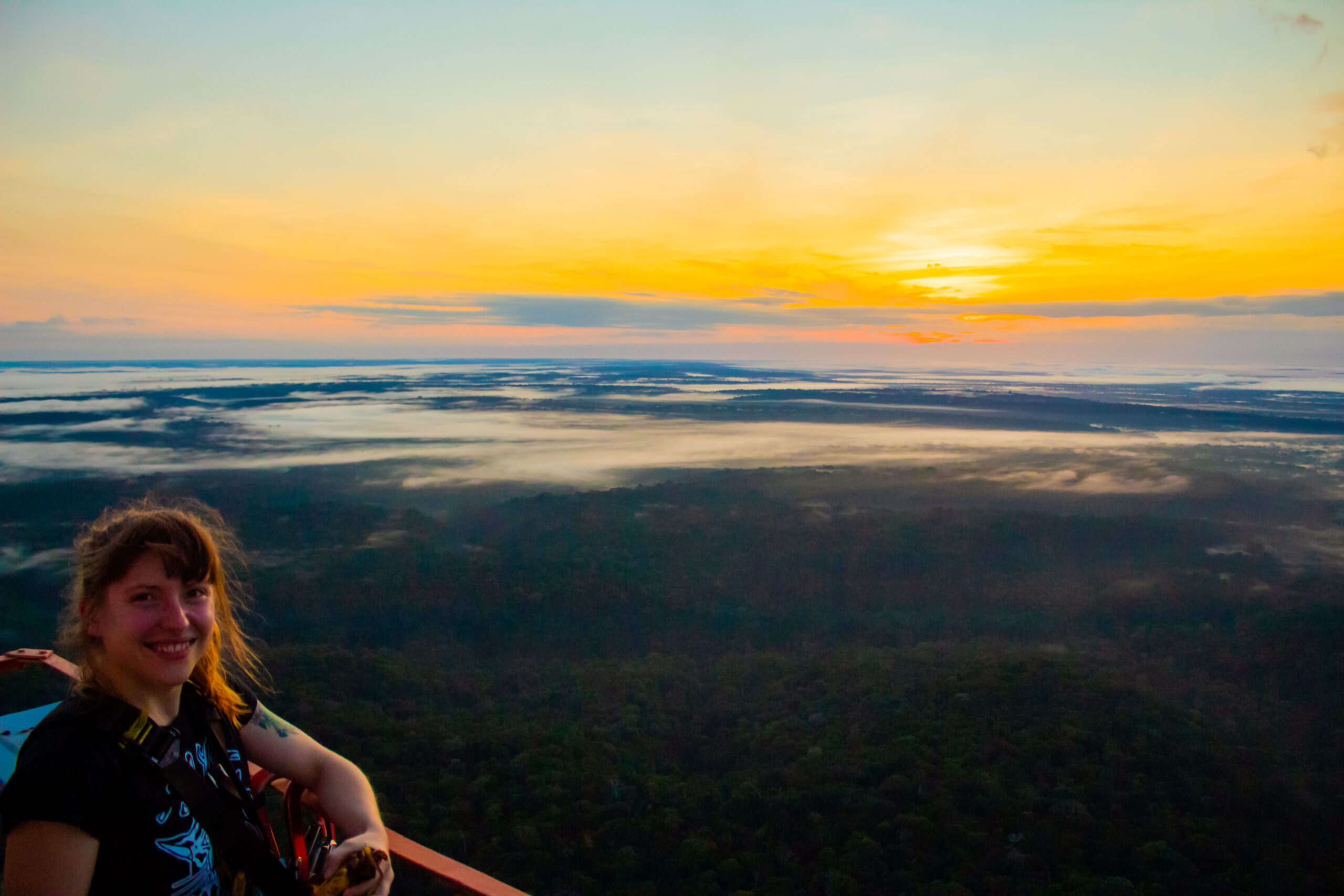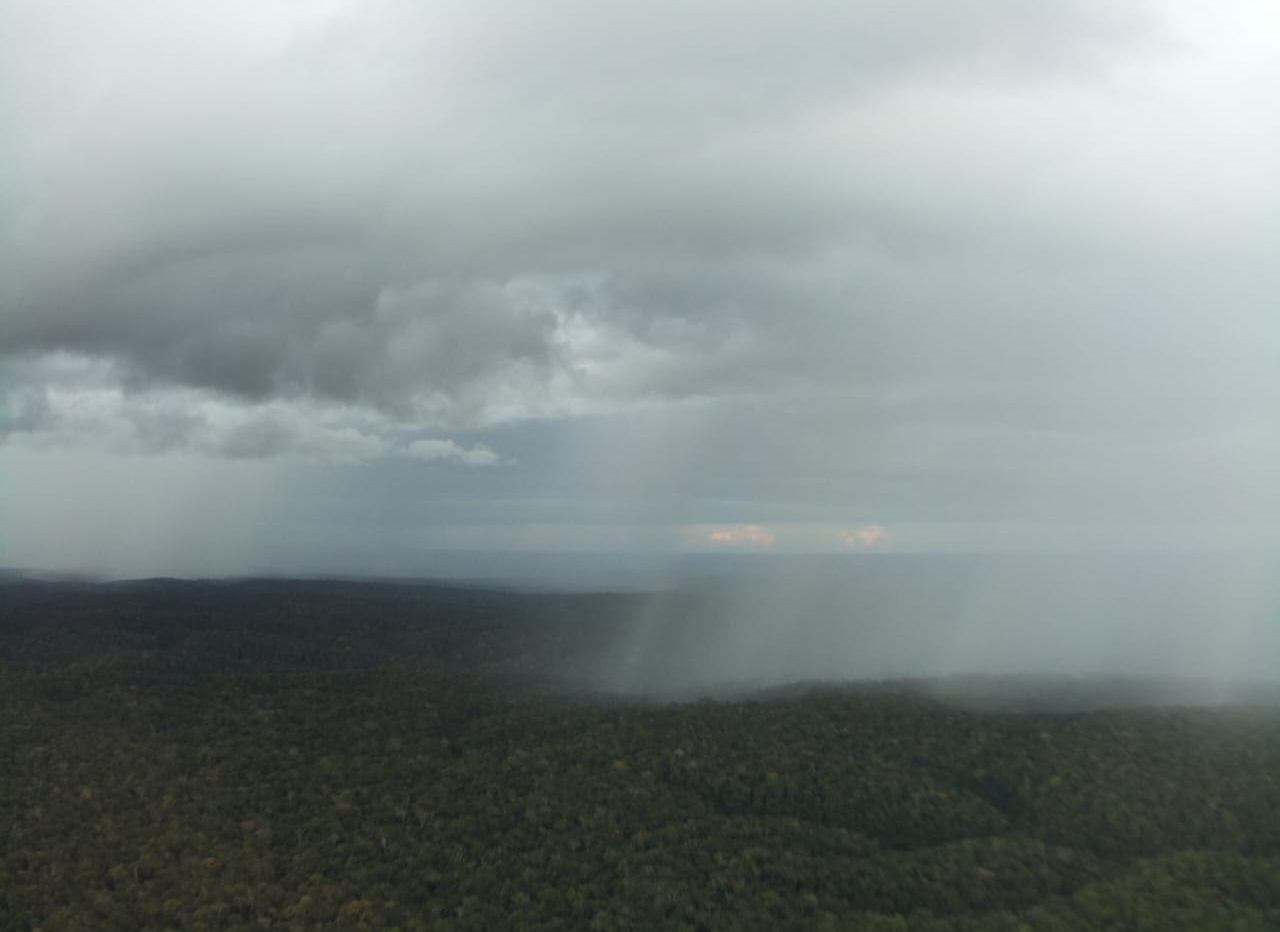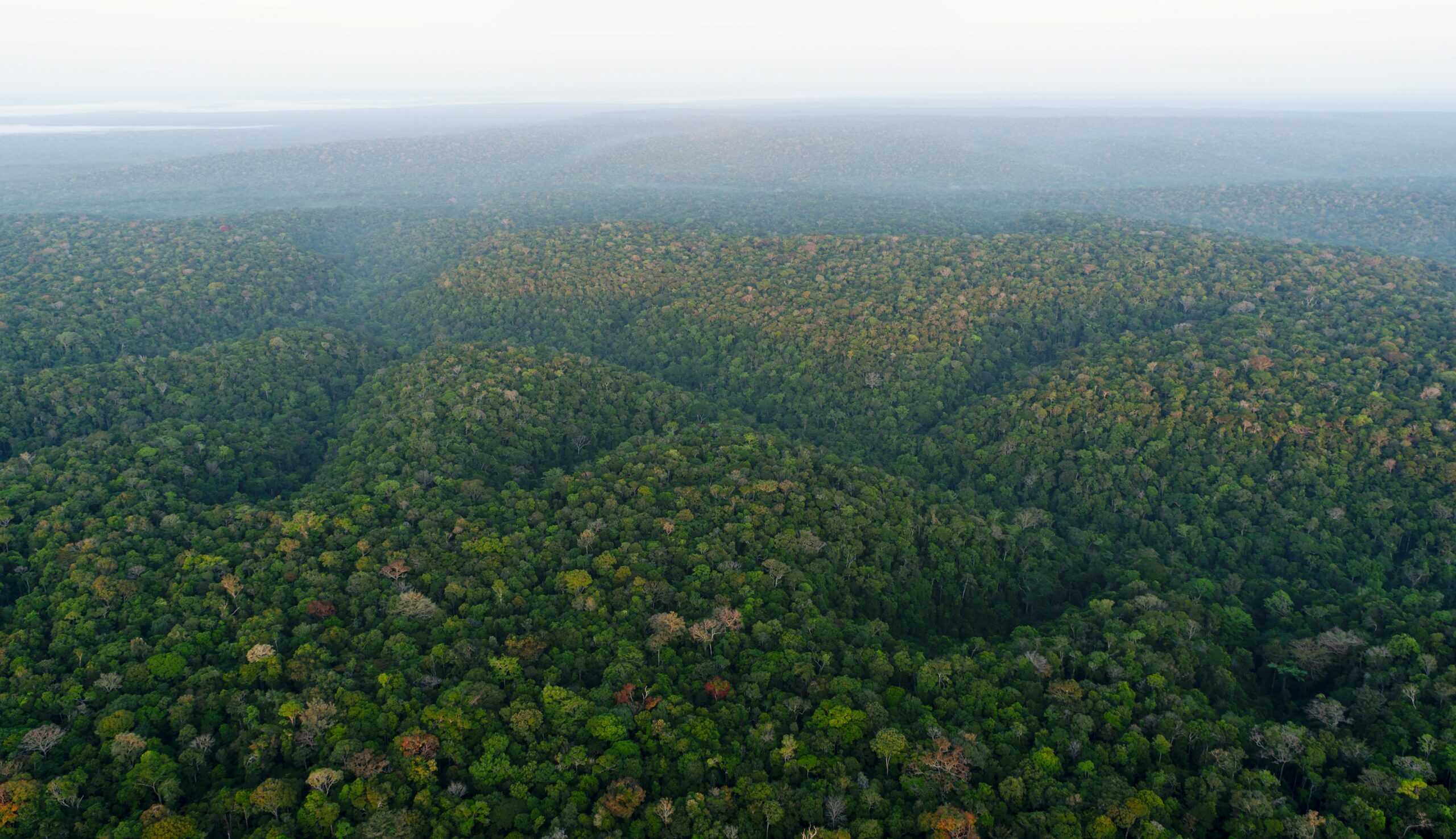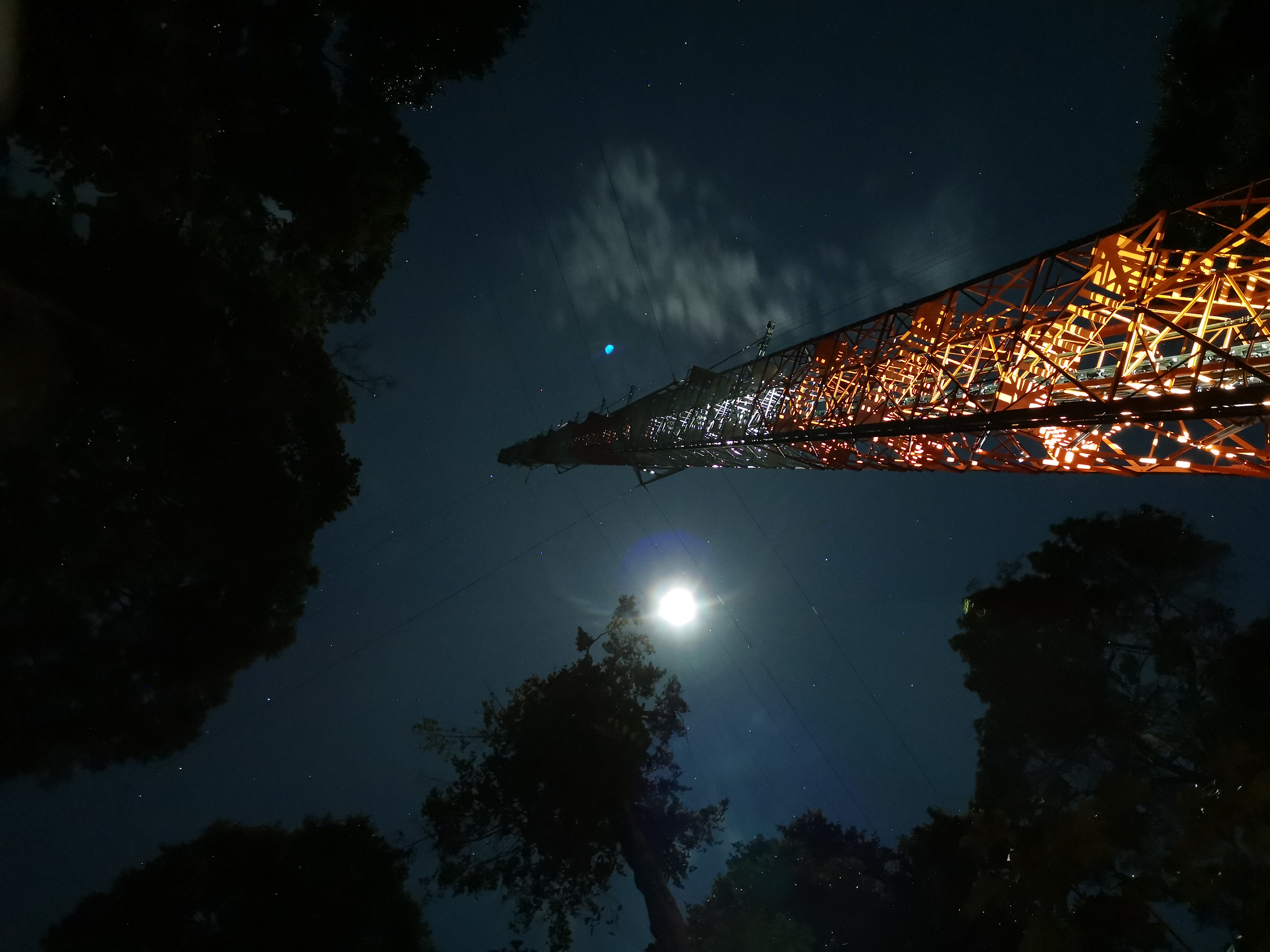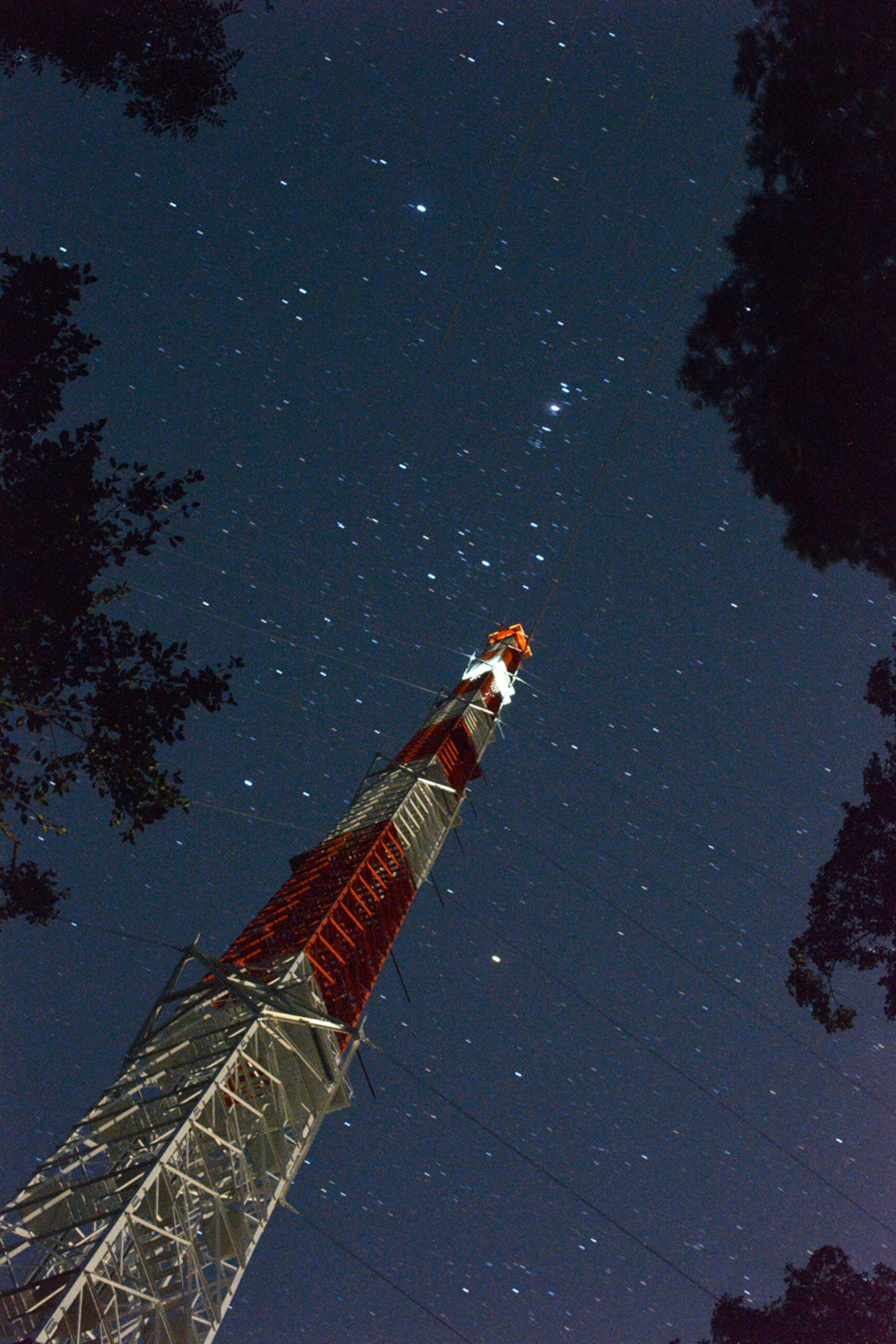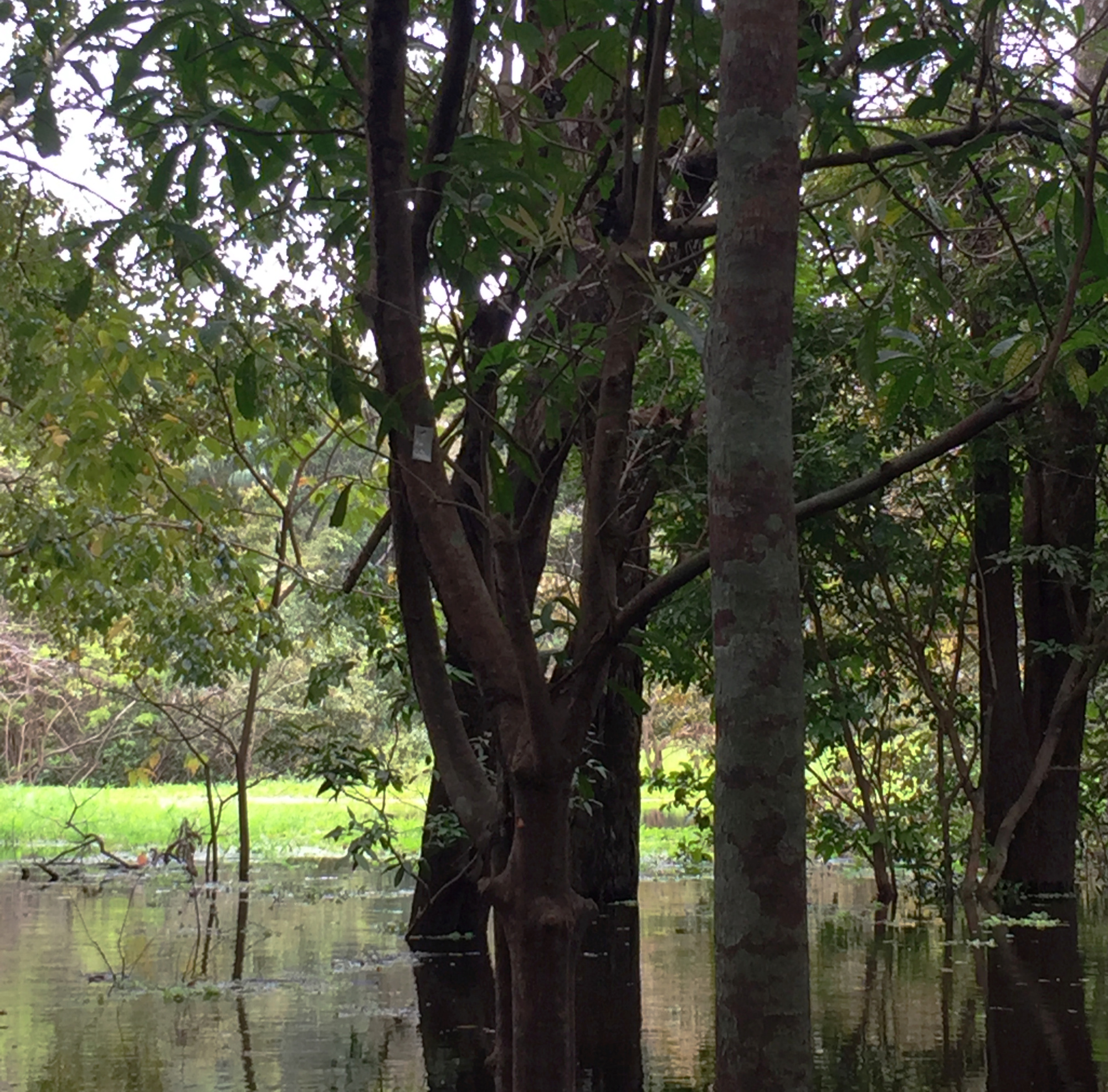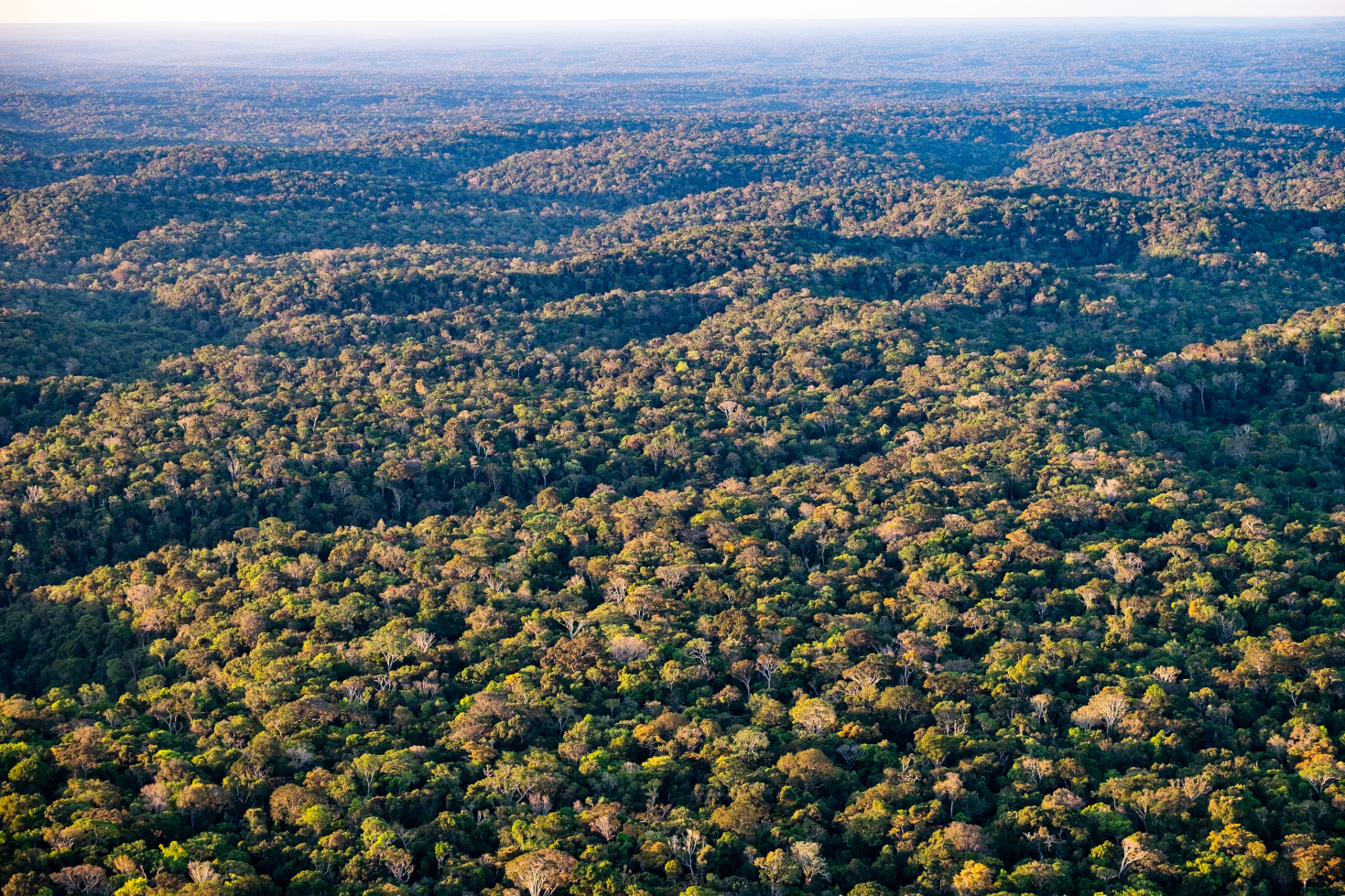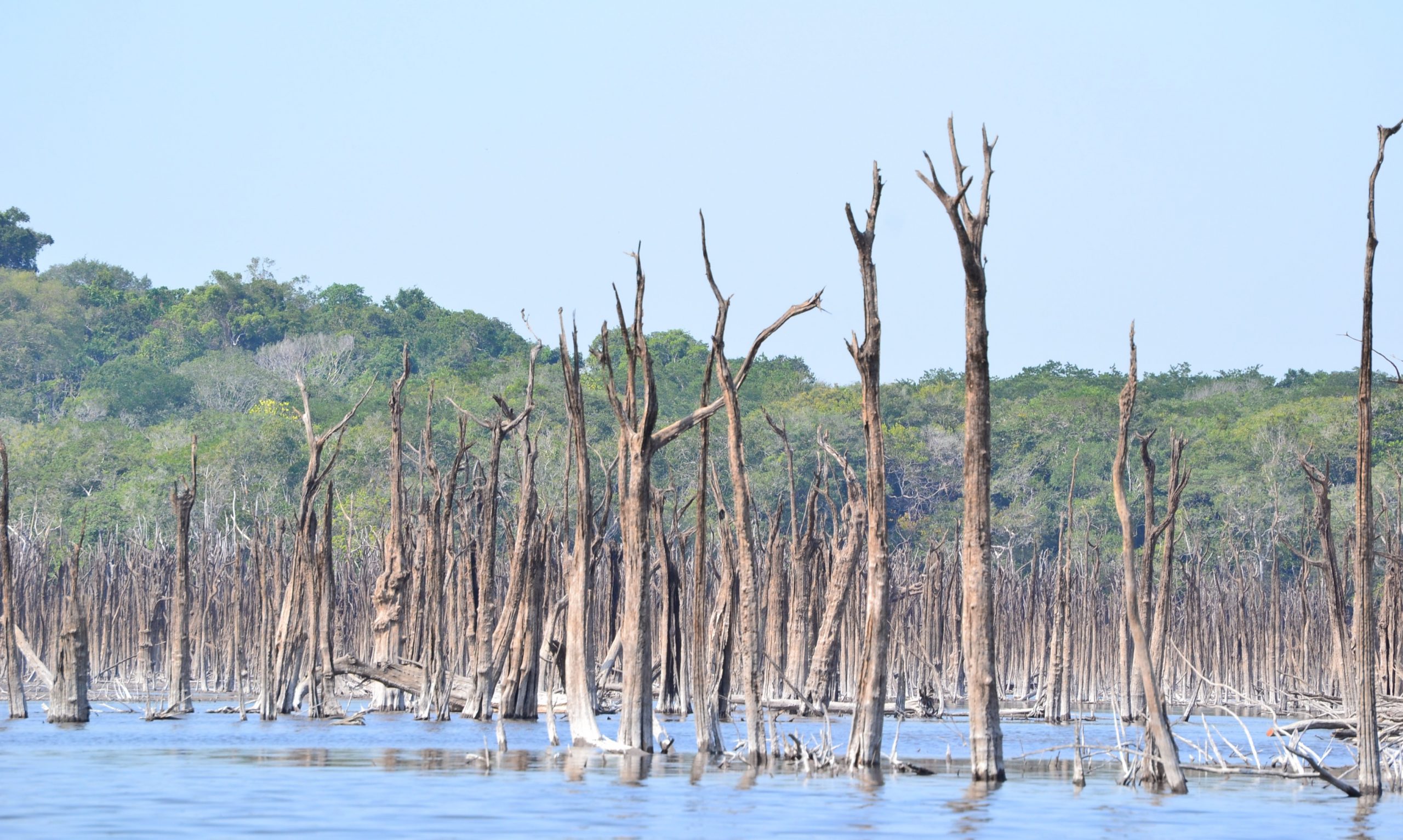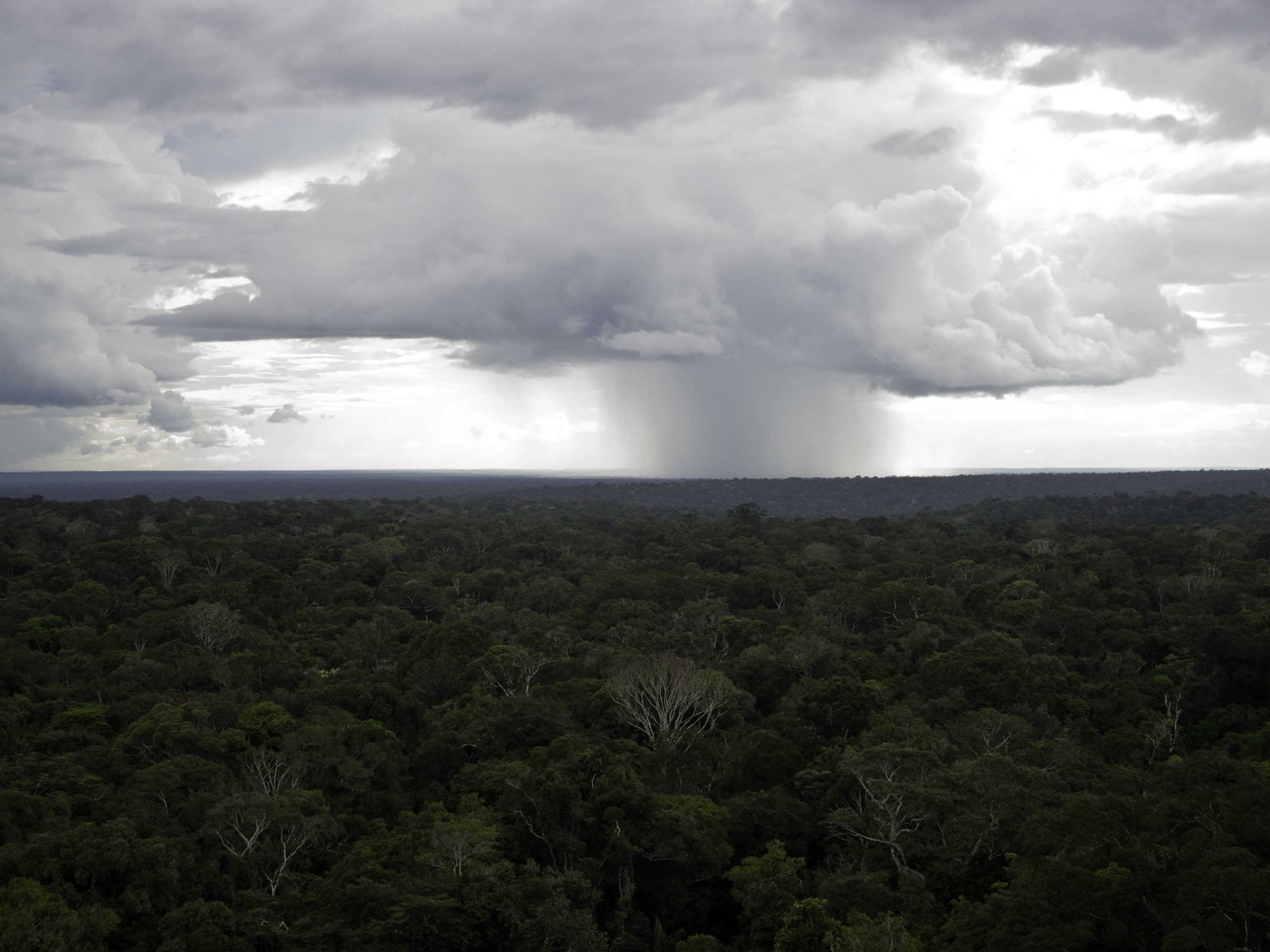Methane in the Amazon
Methane emissions are smaller than those of CO2, and methane abundance in the atmosphere is much smaller. But methane is much more efficient in trapping heat than CO2 is, making it a very important greenhouse gas. Like CO2, methane is emitted by the burning of fossil fuels but it also has many natural sources. They include thawing permafrost and wetlands.
This is where the Amazon rainforest comes into play. The Amazon and its tributaries are bordered by wetlands of continually flooded forest. In addition, river levels swell significantly during the wet season and seasonally flood large areas of otherwise dry forest. Biomass begins to rot in oxygen-depleted water in these wetlands and produces methane. Scientists estimate that up to one-third of all global wetland methane emissions stem from the Amazon rainforest.
Because methane is such an important greenhouse gas, is it crucial that we better understand the natural processes that contribute to methane emissions. We want to figure out what source and sink regions are and how climate change affects them. Yet emissions from tropical wetlands are the single largest source of uncertainty to the global methane budget. Now Santiago Botía and his co-authors analyzed methane in the atmosphere at ATTO. Over the course of five years, they measured methane along with other properties, such as wind speed, wind direction and the stratification of the atmosphere.
Curious methane emission in the dry season
They noticed frequent pulses of methane emissions during the night, but only under certain conditions. The winds always came from the Southeast, the direction where the Uatumã River lies. The atmosphere was also very well stratified above the canopy during those nights and wind speeds comparably low. Surprisingly, these nighttime events mostly occurred in the months of July to September – the dry season in the Amazon. These findings posed a puzzle to our researchers for quite some time.
After thoroughly analyzing all the available data and rejecting other potential sources like fires and methane emitted in the main Amazon River branch, they came to the conclusion that the most likely source is the Uatumã River. Lots of flooded forest trees and dead stands are located in the Uatuma towards the southeast of ATTO. The Balbina dam built in the 1980s changed the natural flooding pulse along the river, causing massive mortality of flooded forest trees downstream of the dam, reaching all the way to the ATTO site. During the dry season when water levels are low, methane produced in the water column and river sediment might escape more easily from the water and enter the air above. Under just the right atmospheric conditions that occur more frequently during the dry season, winds bring this the methane-enriched air to the ATTO site.
These results are an important first step in figuring out the methane emission dynamics that we observe at ATTO. But lots of questions remain. Going forward, we plan on performing complimentary methane measurements at the river and with drones. In addition, we want to look at isotope ratios, which will help us to decode the methane sources.
Botía et al published the current study Open Access in Atmospheric Chemistry and Physics, Issue 20: Understanding nighttime methane signals at the Amazon Tall Tower Observatory (ATTO).
Similar articles
Direct measurements of OH radicals are rare and difficult to achieve. However, since they react with BVOCs, Ringsdorf et al. inferred them from isoprene measurements at ATTO. To do so, they applied a technique called ‘Dynamical Time Warping’ from the field of speech recognition. Akima Ringsdorf et al. published the study “Inferring the diurnal variability of OH radical concentrations over the Amazon from BVOC measurements” Open Access in Nature Scientific Reports.
In a new study, Anne Mendonça, Cléo Quaresma, Daniel Marra and their co-authors analyzed different turbulence regimes at the ZF2 site as part of the ATTO-INVENTA project. They also investigated how turbulence is connected to the occurrence of downdrafts and extreme wind gusts, that might lead to tree mortality.
In a new study, Luca Mortarini and his colleagues introduce a novel approach to the study of the roughness sublayer, using a cospectral budget model. Its originality lies in not considering the mixing layer analogy to parameterize the turbulence statistics. In addition, it relates them to the different scales of the wind velocity spectrum without making any assumption on the property of the flow.
Eiky Moraes, Cléo Dias-Júnior and their colleagues wanted to find out if the local topography at the ATTO influenced the atmospheric movements. In particular, they were interested in the effect that topography has on the formation of gravity waves. Comparing two simulations, one with and one without topography, revealed some important differences in the dynamics and chemistry of the atmosphere.
Only when the air inside of the forest canopy mixes with the air above can there be exchange. The physical movement of the air, its turbulence, determine how well these two layers of air, the one inside the forest canopy and the one above, mix. Daniela Cava, Luca Mortarini, Cleo Quaresma and their colleagues set out to address some of these questions with two new studies that they conducted at ATTO. They wanted to define the different regimes of atmospheric turbulence or stability (Part 1) and describe the spatial and temporal scales of turbulent structures (Part 2).
Polari Corrêa and his co-authors analyzed the atmospheric dynamics in and above the forest canopy during one particular night at ATTO. Those conditions changed throughout the night. Turbulence was followed by the formation of a gravity wave and a low-level jet. It was likely formed due to the breeze from the Uatumã River and the hilly terrain. The study highlights the complex dynamics and mechanisms in the atmosphere above a dense forest.
A new study shows that tree growth of Nectandra amazonum (Lauraceae) in the Central Amazonian floodplains does not respond to the annual long-term flooding but to variation of minimum temperature and evapotranspiration.
Chamecki and his co-authors analyzed if the gentle topography underneath the Amazon rainforest impacts atmospheric turbulence. They published their results Open Access in the Journal of the Atmospheric Science.
Recently we mentioned that drowned trees along the Uatumã River a likely the cause for enhanced methane emissions measured at ATTO. Now Angélica Resende and her co-authors investigated how changes in flooding regimes impact tree mortality in floodplains. They compared two sites in the Amazon basin. Along the Jaú River, the floodplain environment is still largely undisturbed. Along the Uatumã near ATTO, on the other hand, the flooding regime has been altered by the implementation of the Balbina hydroelectric plant further upstream.
Convective storms often occur in the tropics and have the potential to disturb the lower part of the atmosphere. They might even improve the venting of trace gases out of the forest canopy into the atmosphere above. To better understand these processes, Maurício Oliveira and co-authors used the infrastructure at ATTO to study storm outflows during nighttime. They published the results in a new paper in the Open Access Journal Atmospheric Chemistry and Physics.


